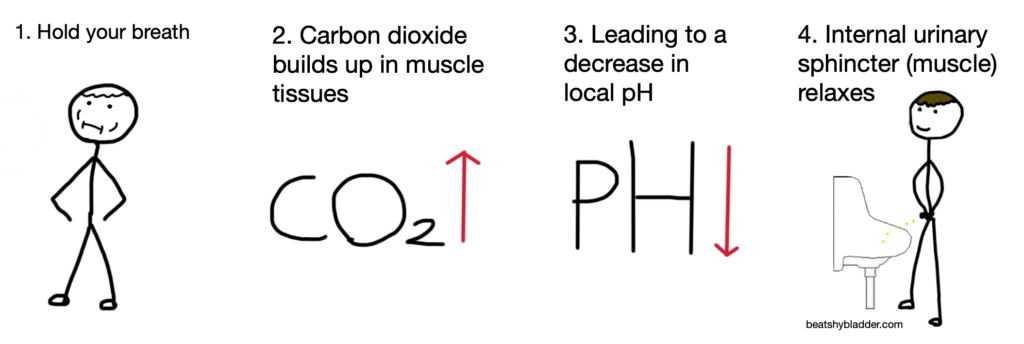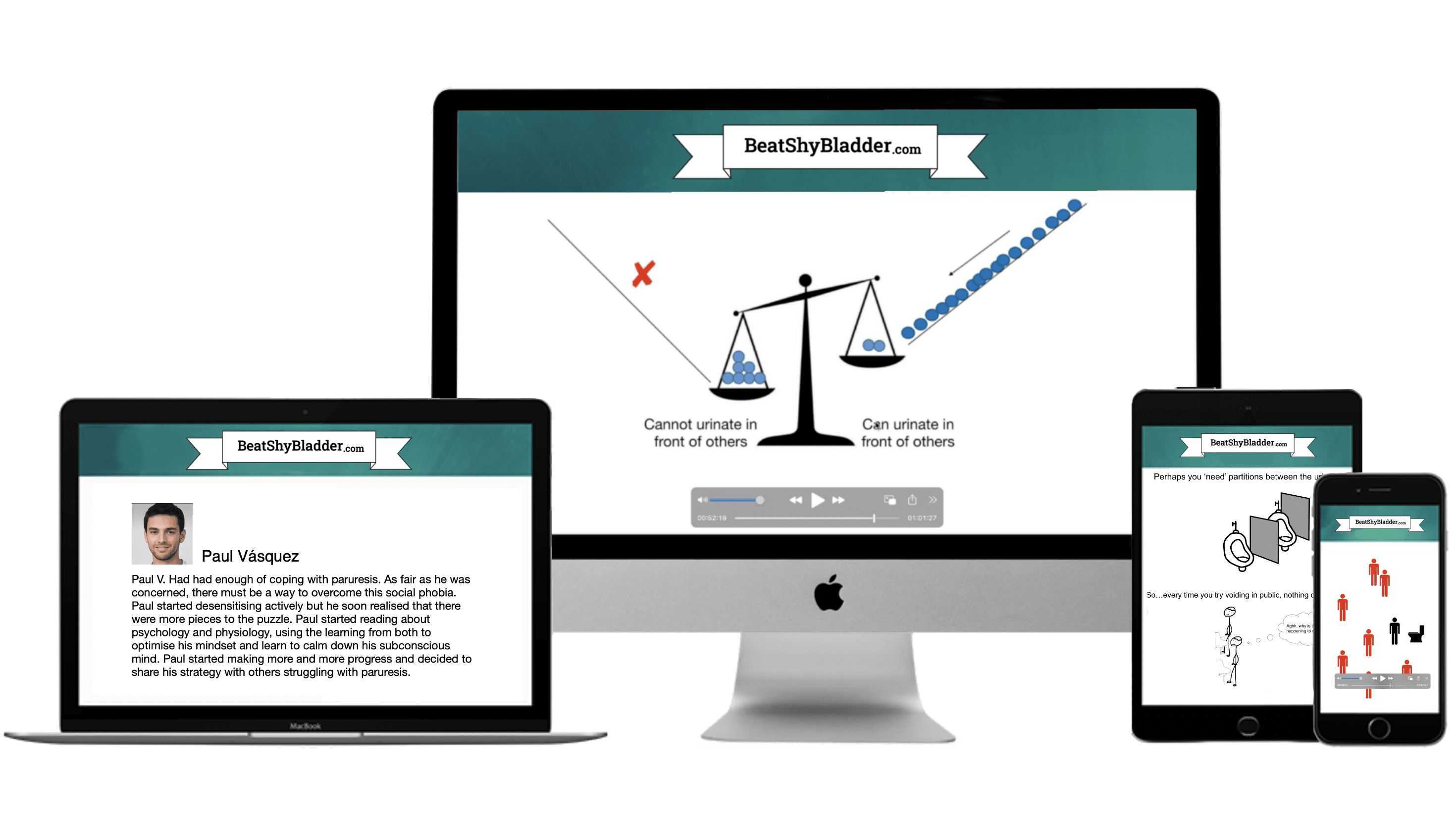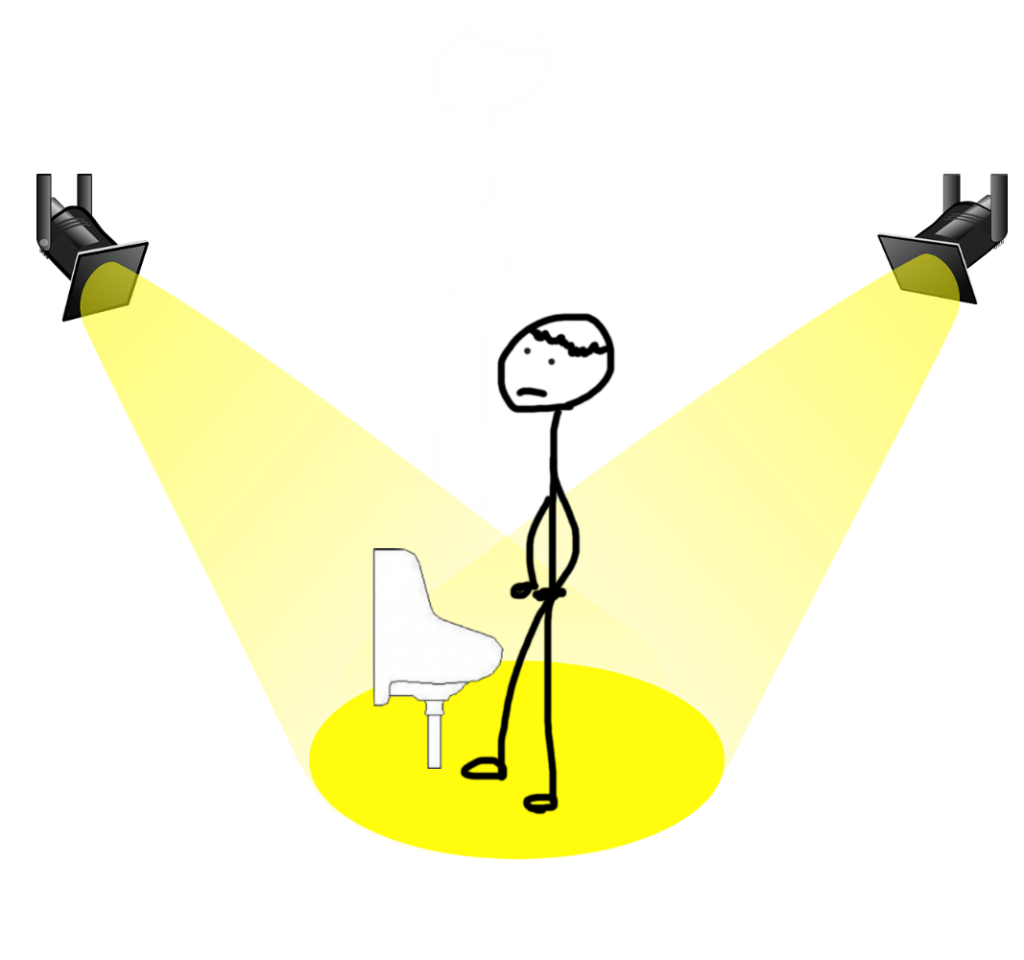Does the way you breathe influence the extent to which you experience paruresis? The answer might surprise you!
Why breathing matters
Paruresis is an automatic physiological response to a certain environmental stimulus. In essence, when your subconscious threat detection mechanism perceives an environmental stimulus to be a threat, you are launched into a state of fight, flight or freeze.
Much like the involuntary quickening of your heart rate when you are scared, the involuntary tightening of the internal urinary sphincter in public places is a physiological response.
You know what else is a physiological function? That’s right, breathing!
Most of the time, we breathe without even thinking about it (it is an automatic process). Luckily, we can easily take over auto-pilot and have full control over our breathing whenever we want.
Since most physiological functions are inter-related, we can control our breathing to influence other physiological processes, even those under subconscious, involuntary control.
There are many ways in which we can control our breath: quickly, slowly, through the nose or mouth, deep, shallow, diaphragmatic (belly) or chest breathing. Or you can choose to hold your breath altogether!
Each of these will alter our physiology in some way and sends us into a deeper state of fight or flight or can help us enter a controlled state of calm. Essentially, breathing is a physiological lever we can use to our advantage.
Breath hold method
What is the breath-hold technique?
Internet forums are rife with various different theories about the breath-hold technique. Some people swear by it, claiming that holding their breath while attempting to pass urine makes their shy bladder disappear.
On the other hand, some people claim it is a bogus practice and does not help in any way. Is there any scientific validity to the breath-hold technique?
The science behind the breath-hold method
When we exhale, we release carbon dioxide from our body out into the atmosphere. Therefore, when we hold our breaths, we start accumulating a build up of carbon dioxide in our muscles and blood stream.
When carbon dioxide builds up in a muscle, it can cause the muscle to become more acidic. This decrease in local pH can affect the ability of the muscle fibers to contract effectively (muscles require a specific pH range to function optimally), leading to a decrease in muscle tension.
It is therefore possible that holding your breath may cause the internal urinary sphincter to become more relaxed, allowing urine to flow.

Furthermore, sensations of lightheadedness may distract you from your environment and allow you to pass urine more easily.
Overall thoughts on holding your breath
Reports on the efficacy of the breath-hold method all appear to be anecdotal. Furthermore, many people on various forums claim this technique does little to no good.
Most people are only able to hold their breath for a limited amount of time and this short-term carbon dioxide build-up may not be sufficient to produce any significant effects on muscle tension.
Pushing yourself to hold your breath to the limit can be quite dangerous! Box breathing is a safer alternative you may want to try out if the breath-hold method is not for you.
Abdominal versus chest breathing
Abdominal breathing and chest breathing are two types of breathing techniques that are used to control the flow of air into and out of the lungs.
They differ in the way air is drawn into the lungs, and this can have different physiological effects on the body.
Abdominal breathing, also known as diaphragmatic breathing, involves expanding the abdomen as you inhale and contracting it as you exhale. This technique is more efficient and allows for deeper, more complete breaths, as it utilizes the diaphragm, a large muscle located beneath the lungs. As a result, this type of breathing can increase the oxygen exchange in the body and promote relaxation by stimulating the parasympathetic nervous system.
Abdominal breathing can also help to reduce stress and anxiety, as well as improve digestion and blood flow.

On the other hand, chest breathing involves taking short, shallow breaths that primarily expand the chest and upper lungs. This technique is less efficient and results in less oxygen exchange in the body. Chest breathing can cause tension and stress, as it is associated with the sympathetic nervous system’s fight-or-flight response. This can lead to increased heart rate, blood pressure, and muscle tension.
In summary, abdominal breathing is a more efficient and effective breathing technique that can increase oxygen exchange, promote relaxation, reduce stress and anxiety, improve digestion and blood flow. Chest breathing, on the other hand, is less efficient, can cause tension and stress, and is associated with the sympathetic nervous system’s fight-or-flight response.
You can tell the difference between which type of breathing you are doing by noticing wether it’s your belly or your chest that expands as you breathe. Make sure you become accustomed to belly breathing to lower your fight or flight response and help you minimise shy bladder syndrome.
Box breathing
Box breathing a four-step breathing technique that involves inhaling for a count of four, holding your breath for a count of four, exhaling for a count of four, and holding your breath again for a count of four. Think of it as “boxing” your breath into a pattern! This technique can be done anywhere, at any time, and can be especially useful to slow your heart rate and gain a sense of calm.

But how does it work?
By slowing down your breathing and focusing on the counts, box breathing activates the parasympathetic nervous system, which is responsible for the body’s rest and digest response. This helps to reduce stress and anxiety, lower heart rate and blood pressure, and promote a sense of calmness and relaxation. It’s like hitting the reset button on your body and mind! So next time you’re feeling overwhelmed, try a few rounds of box breathing to get back to a state of zen.
Overcome Shy Bladder Syndrome Today
Get your hands on the time tested Beat Shy Bladder Blueprint
- Self Auditing
- Protocol Reviews
- Knowledge Trove
- Feedback Loops
- Heart Rate Variability
- Visualisation
- Mindset Upgrade
- Desensitisation




